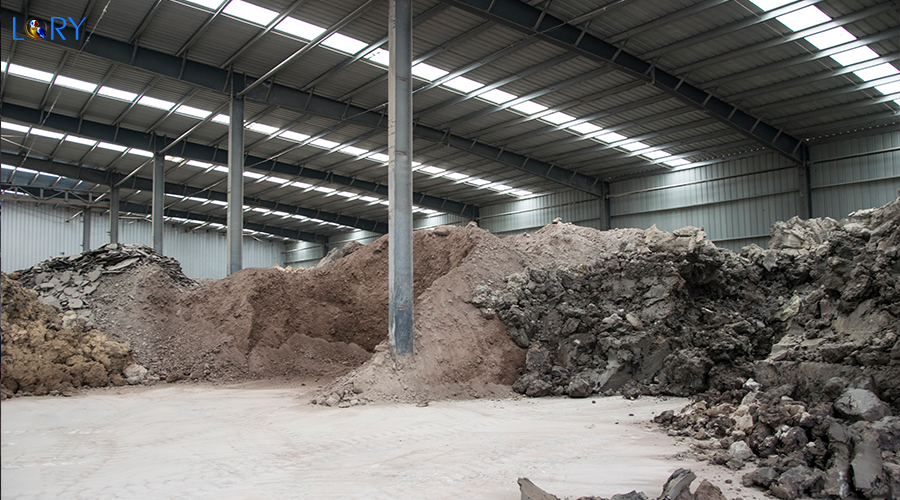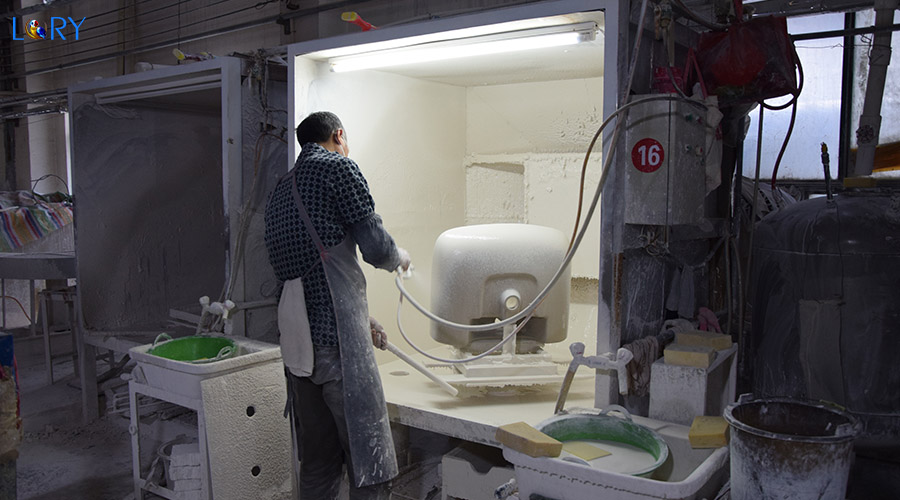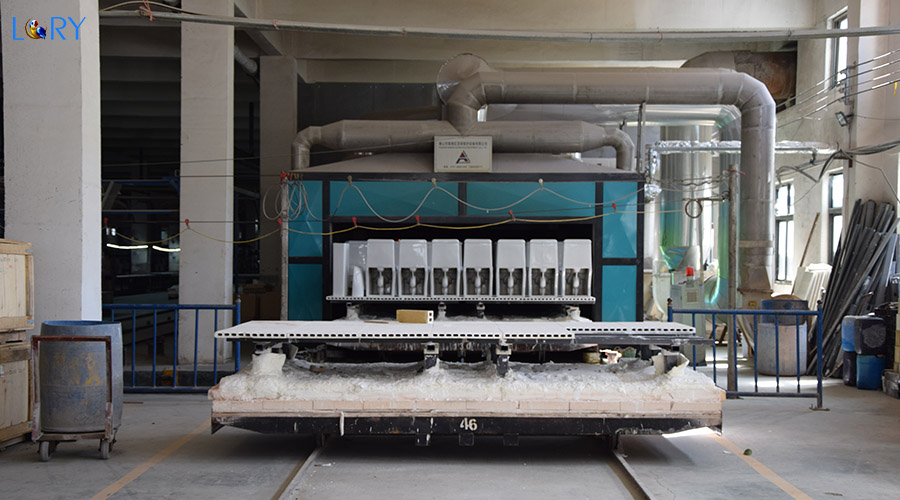Characteristics of ceramics:
1.Heating at a high temperature of 1280 degrees Celsius makes the product truly fully ceramic, possessing the advantages of high temperature resistance, wear resistance, and non water absorption.
2 imported special glaze formula, with a smooth and delicate glaze surface, wear-resistant surface, good stain resistance, and easy to clean.
3. Long term use to ensure that it is as new as new.
Introduction to the process of ceramic sanitary ware products:
1) Raw materials for ceramic production
Divided into porcelain clay and glaze, they contain basically the same raw materials, but have different raw material ratios.
Its main components include feldspar, quartz, iron oxide, zirconia, aluminum powder, magnesium oxide, and pigments.
K2O SiO2 ZnO ZrO2 AL2O3 MgO
Clay: A type of clay used in the production of pottery and porcelain, abbreviated as clay.
Porcelain: Finished product that is completely vitrified into porcelain during high-temperature firing.
Pottery: Finished product that cannot be fully vitrified into porcelain during high-temperature firing.
The difference between porcelain and pottery: raw material formula, product water absorption, and firing temperature.
Grout: The raw material used for forming grouting.
Glaze: The raw material used for spraying glaze on semi-finished products.
Production process: ball milling, screening, iron removal, and pool storage.
Ball milling and screening must meet the national standard of 325 mesh.

2) Mold
Gypsum molds used for molding and grouting.
Material: gypsum powder
Features: Fast water absorption, short solidification time, convenient repair, and low price.
Grouting frequency: 80 times to 120 times.
Production process: 3D drawing design, original mold artificial sculpture, and mother mold made of resin.
Forming a mother mold, producing sub molds through the mother mold for molding and grouting.
3) Forming and pouring
Use slurry to form a semi-finished body in a gypsum mold.
At least two module models are combined for each formed product.
Forming method: single-sided suction, double-sided suction.
Production process: grouting, grouting, demolding, splicing and punching, and trimming.
4) Spray glaze
Spray glaze evenly on the semi-finished body.
Spray glaze method: machine hand spray glaze or manual spray glaze.

5) Burning
The semi-finished product sprayed into glaze is formed by high-temperature heating in the kiln.
Burning shrinkage rate: not more than 1.15
Burning time: 13-15 hours.
Firing temperature: 1210 ℃ -1290 ℃
Burning process: pre heating zone, firing zone, cooling zone.
Kiln types: shuttle kiln, tunnel kiln, roller kiln.
